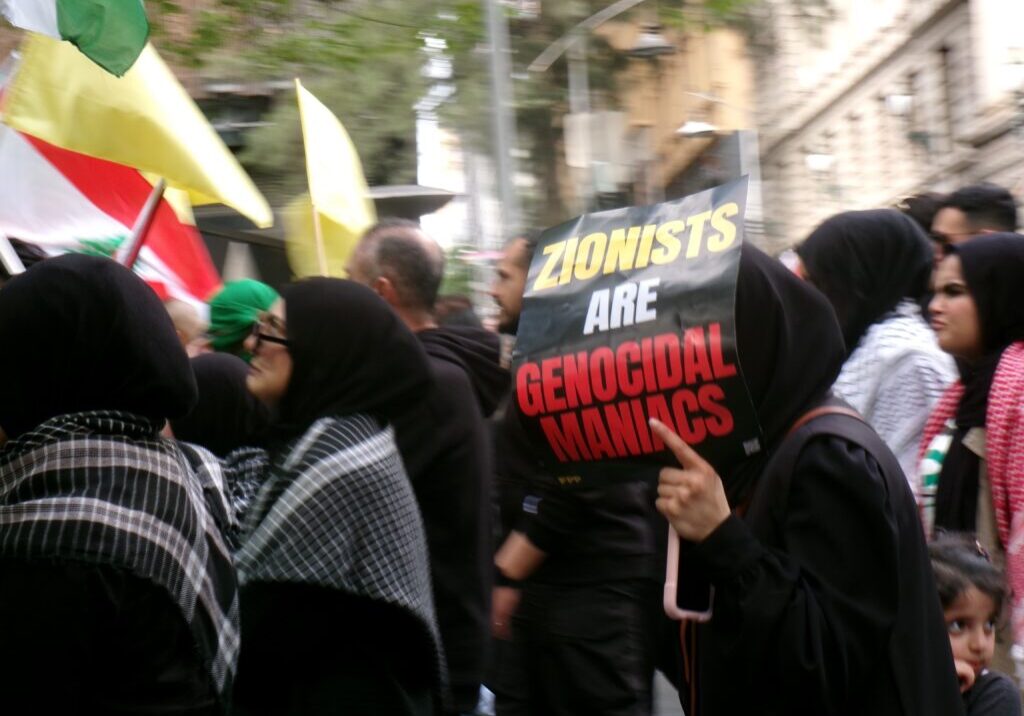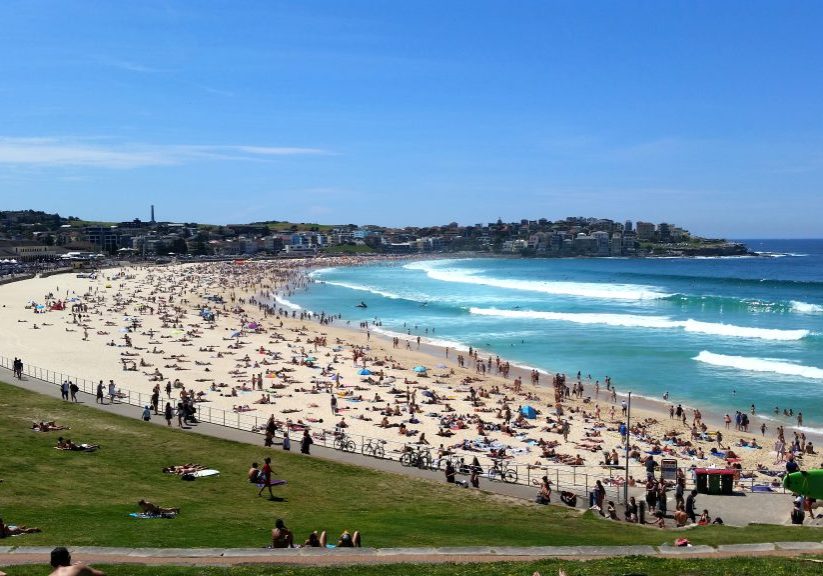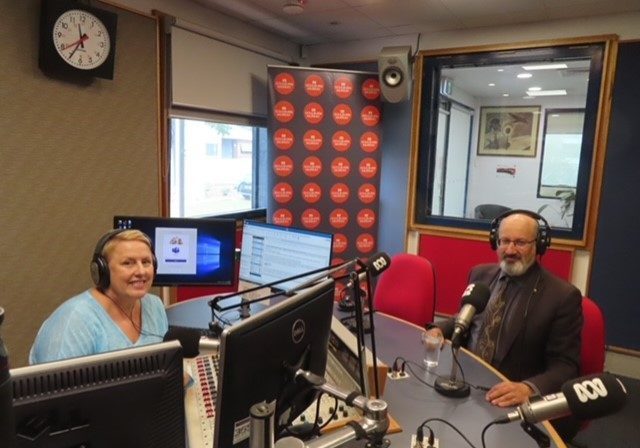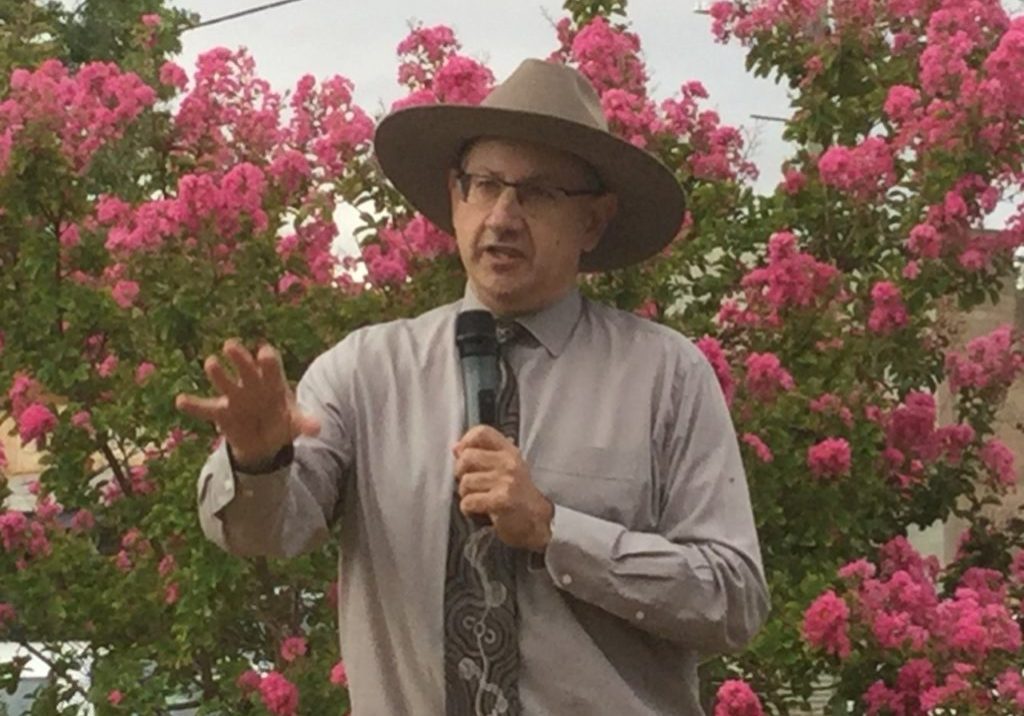Australia/Israel Review
Iraq: How to Win
Jun 1, 2006 | External author
A strategy for victory
By Frederick W. Kagan
In eastern Ramadi, US Army Capt. Joe Claburn visited a house beside an alley from where four guerrillas…had attacked a guard tower on a US base…Claburn asked the man if he was willing to signal US troops when insurgents turned up. “I’m telling you sincerely, I cannot cooperate with you,” the man replied, shaking his head. “We know you are trying to protect us, but the insurgents would cut off my head. We are too frightened to do anything. They’re everywhere. They’re probably watching us right now.”
Associated Press, May 8, 2006
 |
| Iraq will require a more aggressive strategy to overcome to obstacles |
The most basic function of any government is to provide security to its people. The Iraqi government is currently failing at this task in large areas of the country. This failure reduces the Iraqi population’s willingness and ability to support the counterinsurgency effort, undermines the government’s legitimacy, hinders the political process, and derails reconstruction. It is the single most serious problem in Iraq today. Yet coalition forces have not stepped in to fill the security gap.
Establishing security throughout Iraq has always been a stated goal of the coalition forces, but it has never been their clear priority. Operations against insurgents have consisted mostly of raids and isolated sweeps, apparently divorced from any larger strategic aim. The coalition has never devised a deployment, or planned an operation, aimed at establishing security in the unstable areas of Iraq on a large scale. Coalition strategy has tended to focus instead on minimising the role of coalition troops in handling the insurgency and pushing indigenous forces into the front of the fight, sometimes even when they were unprepared for such a role. The Bush administration did articulate the strategy of “clear-hold-build” in late 2005, declaring it a “strategy for victory.” But US forces have not, on the whole, been ordered or permitted to execute that strategy, and do not currently seem to intend to do so.
One of the reasons for this reluctance is the conviction, reinforced by the first battle of Falluja in early 2004, that coalition forces cannot really perform such missions. Generals John Abizaid, George Casey, and many others have argued that the mere presence of US forces is an irritant, and their active operations against insurgents alienate more Iraqis than they win over. Yet a number of developments in 2005 should have called this assumption sharply into question.
Coalition forces partnered with Iraqi units were able to put down an uprising in Sadr City, a huge predominantly Shi’ite district of Baghdad, in early 2005 and then clear out a major insurgent stronghold in Tal Afar in September. In both cases, skillful preparation, the intelligent and discriminate use of force, and attention to vital “non-kinetic” parts of the operation (efforts to change local attitudes by improving water and sewer systems, building schools and clinics, handing out military rations, and so on) led to great and lasting success. These operations seriously undermine the argument that only the Iraqis can successfully prosecute such clear-and-hold missions, though they also show that the Iraqi Security Forces (ISF) will not be ready to conduct them on their own for the foreseeable future. In fact, the present course of “muddling through” while attempting to draw down as rapidly as possible is almost certain to prolong the insurgency, and with it the American troop presence in Iraq.
Common wisdom, especially among senior military leaders, holds that any thought of combining military power with diplomatic, political, economic, and other non-kinetic tools to bring the violence in Iraq rapidly under control is absurd. As a result, the road not taken – a strategy of actually fighting the insurgency to defeat it – has never been examined seriously.
Military operations alone will not solve Iraq’s problems. Yet they are essential to maintain political progress, support economic and infrastructure development, and lower inter-sectarian and inter-ethnic tensions. Iraqi forces must play a central role in any such operations, especially during the process of clearing out insurgents, and they would be the ones to hold and build after the coalition had cleared. Even thinking about such integrated political-economic-military efforts executed jointly by the coalition and the ISF was not possible until about six months ago. The ISF did not have the capability to function even on this basic level, and coalition forces were only beginning to work through the complexities of integrated planning. The experiences of 2005, the rapid growth in the capability of the ISF, and the seating of a permanent Iraqi government now coincide to make possible a strategy for victory such as President Bush suggested last year. The plan offered here addresses only the military component of what would necessarily be a multifaceted program.
The Security Problem in Iraq
Iraq today presents four military challenges: insurgency among the Sunni Arabs, the growth of Shi’ite militias, Islamist terrorism conducted by “al-Qaeda in Iraq” and related organisations, and a breakdown of law and order in some areas. American military strategy since the beginning of the insurgency has largely focused on Islamist terrorism. After the February bombing of the al-Askariya mosque in Samarra, however, General John Abizaid testified at a Senate hearing that, as the New York Times put it, “sectarian violence in Iraq was replacing the insurgency as the greatest threat to security and stability.” From the beginning of the insurgency, American strategy for handling the Sunni insurrection has centered on helping the Iraqis to defeat the rebels, rather than doing it for them. Coalition efforts to clear out specific trouble areas, such as Fallujah, Tal Afar, and the upper Euphrates river valley have been largely reactions to immediate dangers rather than parts of any strategy for establishing security throughout the country.
 |
| Iraq’s most powerful force for disorder are the Sunni insurgents, not the foreign jihadists |
Today, the Sunni Arab insurgency is the single most powerful force for disorder and violence in Iraq. Shi’ite militias, present since the beginning of the occupation, have grown in power in response to the spectacular bombings conducted by Islamist terrorists. Those terrorists, some of them foreigners, rely on the Sunni Arab community for safe havens, supplies, and other necessary assistance. They receive that support primarily because fear and disorder prevail. The breakdown of law and order in parts of the country reflects the difficulty of establishing a robust Iraqi police force in the face of the insurgents’ continuous attacks.
There is little the coalition can do to disarm the Shi’ite militias directly. Attempts to deploy coalition forces in Shi’ite communities, or to disarm the militias by force, are likely to backfire. The best hope of persuading the Shi’ite militias to disarm voluntarily lies in removing the threat to their communities that prompted the formation of those militias in the first place.
The coalition has had considerable success in disrupting the Islamist terror networks in Iraq, although it has not captured the senior-most leaders, and it has been unable to prevent those organisations from conducting significant attacks on Shi’ite holy sites and gatherings. It is not clear that these results have been worth the effort expended upon them. As long as the Sunni Arab community provides safe haven and support (and a small number of recruits) to the Islamist terrorists, military operations aimed at the terrorist networks are unlikely to eliminate the danger from them. The best approach, again, would be to eliminate the violence and disorder caused by the insurgency, since these are what fuels both active and passive Sunni Arab support for the Islamist terrorists. The Sunni Arab insurgency is the crux of the military challenge in Iraq, and the coalition should bend every effort to defeating it.
Models
The recent operations at Tal Afar provide a model for determining the troops required to clear and hold a large, isolated urban center. During that operation, Colonel H.R. McMaster’s 3rd Armoured Cavalry Regiment used approximately 3,800 US troops, paired with 5,000 Iraqis, to clear a city of between 150,000 and 200,000 inhabitants (the precise population is impossible to determine because of major shifts before and during combat operations). Using the lower estimate of Tal Afar’s population provides a force ratio of one American soldier to every 40 inhabitants.
The 3rd Armoured Cavalry Regiment achieved success in part by physically isolating Tal Afar (it built a sand-berm all around the city) and evacuating the inhabitants before beginning major combat operations. That technique may not be appropriate in a large city like Baghdad (although it was used with some success in Mosul), but the Sadr City model is available for urban operations. There, Multi-National Division-Baghdad, under the command of Major General Peter Chiarelli, suppressed a large-scale Shi’ite uprising led by Moqtada al-Sadr. With a force ratio of about one soldier per 137 inhabitants, Chiarelli was able to contain and then suppress the uprising in an urban district of some 2.2 million people while also controlling the rest of the city.
General Chiarelli relied on different techniques from those Colonel McMaster would use six months later in Tal Afar. He focused heavily on efforts to restore electricity, clean water, sewage functions, and other essential services to the vast and impoverished Sadr City. His troops conducted a different style of military operation as well, infiltrating gradually, block by block, avoiding massive assaults that could have caused significant collateral damage and civilian casualties.
Neither approach is automatically transferable to other cities, villages, or neighbourhoods of Baghdad. Sadr City was notoriously lacking in essential services. Emphasising similar non-kinetic efforts in other parts of the capital might be less effective. Some neighborhoods of Baghdad are easier to isolate than others; the city is divided by two rivers and various causeways. The coalition already controls substantial territory in the capital, including the Green Zone, the airport, and several other large bases. Isolating trouble spots between these areas of control might be possible – isolating large, coherent Sunni neighbourhoods might not be.
The key point is that General Chiarelli’s and Colonel McMaster’s operations, along with the historical studies summarised in the RAND report, provide a solid basis for estimating troop requirements. It is of course always necessary to adjust tactics, techniques, and procedures to suit the particular challenges of any operation.
Operational Concept
Two principles would underlie any sound plan for routing the Sunni Arab insurgency: Many operations must occur simultaneously throughout the country, and follow-up operations must be readied.
US forces have shown a marked reluctance to plan large-scale operations in several regions at once. One result has been to allow insurgents to melt away during a single large operation and move to new areas, destabilising those areas and establishing new safe havens. Simultaneous operations in several of the problem areas would mitigate this effect, driving the insurgents out of the major population centers of the Sunni Arab lands.
It is not possible, however, to conduct such operations in the three river valleys and Baghdad at the same time with the forces available. It would be necessary to develop a campaign plan in two phases, with forces moving from the first operation to the second as rapidly as possible, in order to prevent the insurgents from using any pause to regroup.
Each of these two operations would itself be broken down into three phases, as were the successful operations in Tal Afar, Sadr City, and elsewhere. In the first phase, small advance parties would move into the area. They (or US forces already present) would collect intelligence about the local population and the nature of the insurgent threat. They also would begin to shape the situation in their area to prepare for operations. This might include work with local Iraqi troops and police, the building of relationships with local leaders, targeted strikes against known resistance leaders, and other kinetic and non-kinetic operations designed to create favourable conditions for the next phase.
In phase two, reinforcements would surge into the area and conduct large-scale cordon-and-sweep operations. For river valley towns and cities, part of the force would “screen” the population centre, establishing observation posts, checkpoints, and other measures to isolate the population, while a joint force of US troops and Iraqis would conduct a house-to-house search for insurgents. In Tal Afar, Iraqi troops were normally the ones interacting directly with the local population, while Americans provided support from armoured vehicles and the air.
In phase three, the reinforcements would move out, leaving behind a robust contingent of Iraqi troops leavened by a substantial US presence. The rule of thumb based on Tal Afar and other successful operations is that the “leave-behind” forces should be at about the ratio of one US battalion for every Iraqi brigade. The American presence helps sustain the ISF, overawe any insurgents who might try to undo the effects of the operation, and restrain the Iraqi soldiers from reprisal attacks or other misbehaviour that would undermine the initial successes. Only in this third phase, after basic security has been established, is it possible to recruit into the local police force and begin the transition from military to civilian rule. The first two phases normally last about 90 days each; phase three could last 12 months or more.
One of the factors confusing the discussion of how to proceed in Iraq is a misunderstanding about the nature of the forces required for the counter-insurgency effort there. Many people, including some senior officers, consistently play down the importance of armoured and mechanised forces and argue for the primacy of light infantry. In reality, repeated operations have shown that mechanised forces are essential for success. Iraqi insurgents in prepared positions can readily wound or kill soldiers walking or riding in Humvees and trucks. It is far harder for them to destroy armoured fighting vehicles and tanks, especially when they have no foreknowledge of operations or time to prepare.
In sum, the presence of American armoured vehicles provides the sort of overwhelming power that can end firefights rapidly and even deter some insurgents from fighting. Contrary to what one might expect, the presence of armoured vehicles can also play an important role in minimising collateral damage and civilian casualties. When light infantry formations find themselves under coordinated attack by insurgents using RPGs and machine guns, they frequently have no option but to call in heavy artillery support or even precision-guided bombs and missiles dropped from aircraft. Such infantry formations supported by armoured vehicles can use the vehicles as shields behind which to advance – or can rely on their extremely accurate main guns to destroy precisely identified targets.
Iraqi forces do not, on the whole, have armour. They are not capable of planning and conducting large-scale attacks against dug-in and prepared enemies. They are not remotely as proficient as US forces at calling in and adjusting artillery fire and air support. They would find it extraordinarily difficult to take back safe havens such as Ramadi and Samarra on their own.
This discussion, finally, is focused on military operations not because they alone can win the war, but because too often discussion of the military options has not been grounded in reality. Success in Iraq certainly requires continued commitment to non-kinetic assistance. Such efforts were key both to Chiarelli’s success in Sadr City and to McMaster’s in Tal Afar. Each clear-and-hold operation must be preceded and followed by intensive efforts to rebuild infrastructure, solidify local political organisations, and restore normal life.
The Plan
With an additional seven brigades devoted to active combat operations, it should be possible to conduct clear-hold-build operations in two phases, totaling perhaps 12 to 18 months of significant combat, followed by a longer-term commitment of substantially smaller numbers of “leave-behind” forces. The general concept of the operation is to move from the outside in.
There are two reasons for this approach. First, recently released captured al-Qaeda in Iraq documents reveal that the foreign fighters feel they are losing in Baghdad. They still see Fallujah and Ramadi as strongholds that they can use to restore their fortunes, however, highlighting the tight interrelation, in their minds, between the centre and the river valleys. Second, because of its size and complexity, Baghdad is the harder problem. It makes sense to attack the more manageable challenges of the river valley cities and towns, thereby demoralising the insurgents and making it clear to the resistance in Baghdad that defeat is near. In this way, the coalition can reasonably expect to reduce the difficulty of clearing Baghdad when it turns to that task.
Accepting Risk
There is certainly risk in undertaking any offensive operations. US commanders and troops less skilful than McMaster and Chiarelli might cause unacceptable collateral damage and alienate local leaders. Unlikely though it seems, given their performance to date, Iraqi insurgents might prove more adept than expected at repelling attacks.
But the risks that attend offensive operations must be set against the risks of passivity and reaction. Insurgent strongholds in Ramadi, Samarra, Baghdad, and elsewhere will have to be cleared out. American forces can do it piecemeal, driving the insurgents from stronghold to stronghold, stringing out the violence and prolonging the coalition presence in Iraq. We can wait for Iraqi forces to gain the requisite skills, allowing the insurgency to entrench itself and grow stronger and, again, prolonging the chaos and need for a US commitment. Or we can simply pull out, turning the situation over to ISF troops we know to be unable to deal with the problems they would face, and thereby run the risk of the collapse of the nascent Iraqi state, with all the horrors therein entailed for the people of Iraq.
As we consider the alternatives, with the possibility of conflict with Iran ever on the horizon, it would be well to ensure that we are not overlooking the option that would best serve our strategic needs. It may be that the fastest way to turn Iraq over to the Iraqis and draw down American forces is not a steady decline of troop numbers. Instead, the fastest possible “exit strategy” may require one last surge effort to bring the insurgency down to a level that the indigenous forces can handle on their own.
![]()
Dr. Frederick W. Kagan is a military historian and resident scholar at the American Enterprise Institute and author of The End of the Old Order: Napoleon and Europe, 1801-1805 (forthcoming). He is grateful to Daniel Barnard for assistance with this article. © The Weekly Standard, reprinted by permission, all rights reserved.






